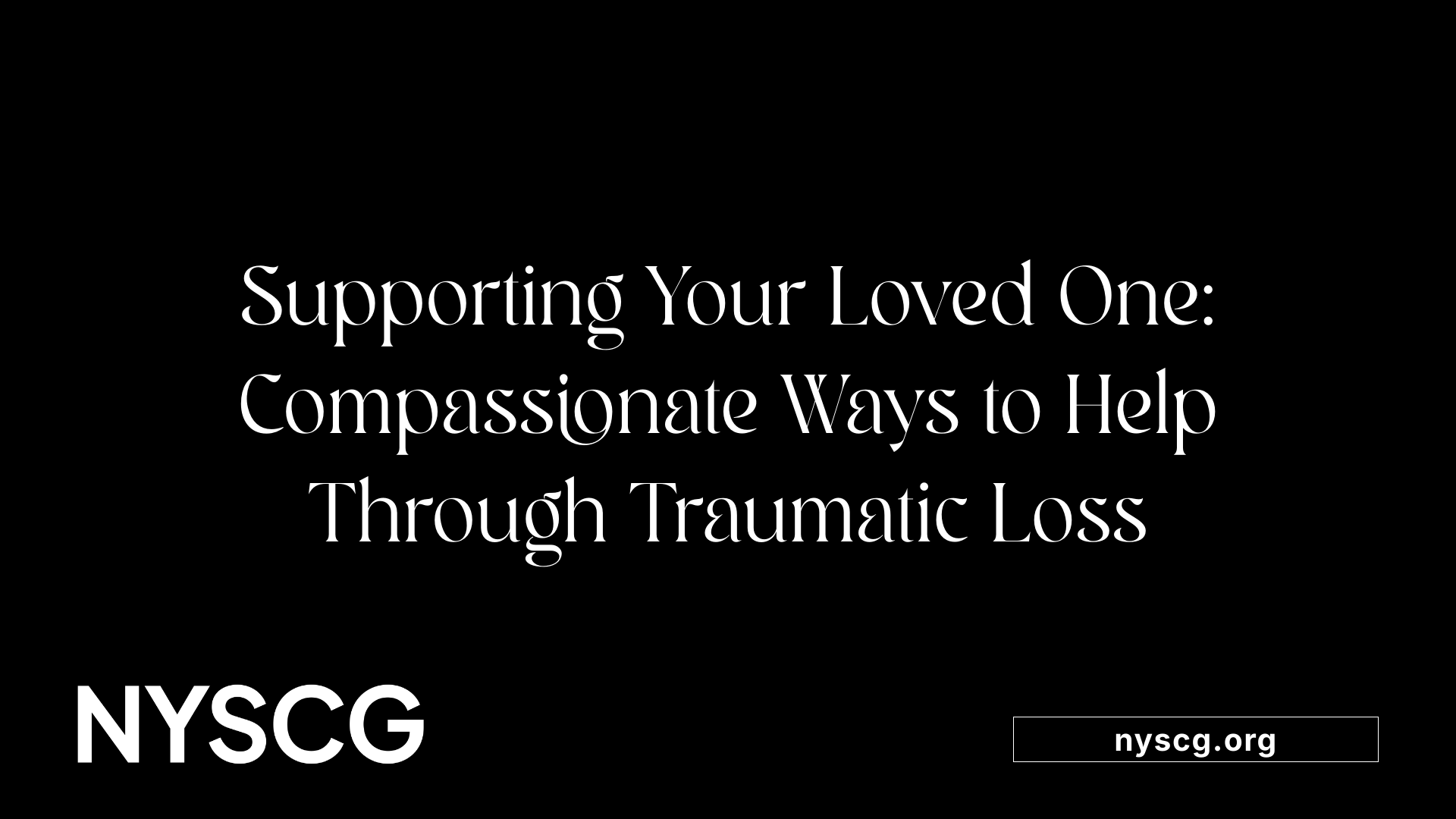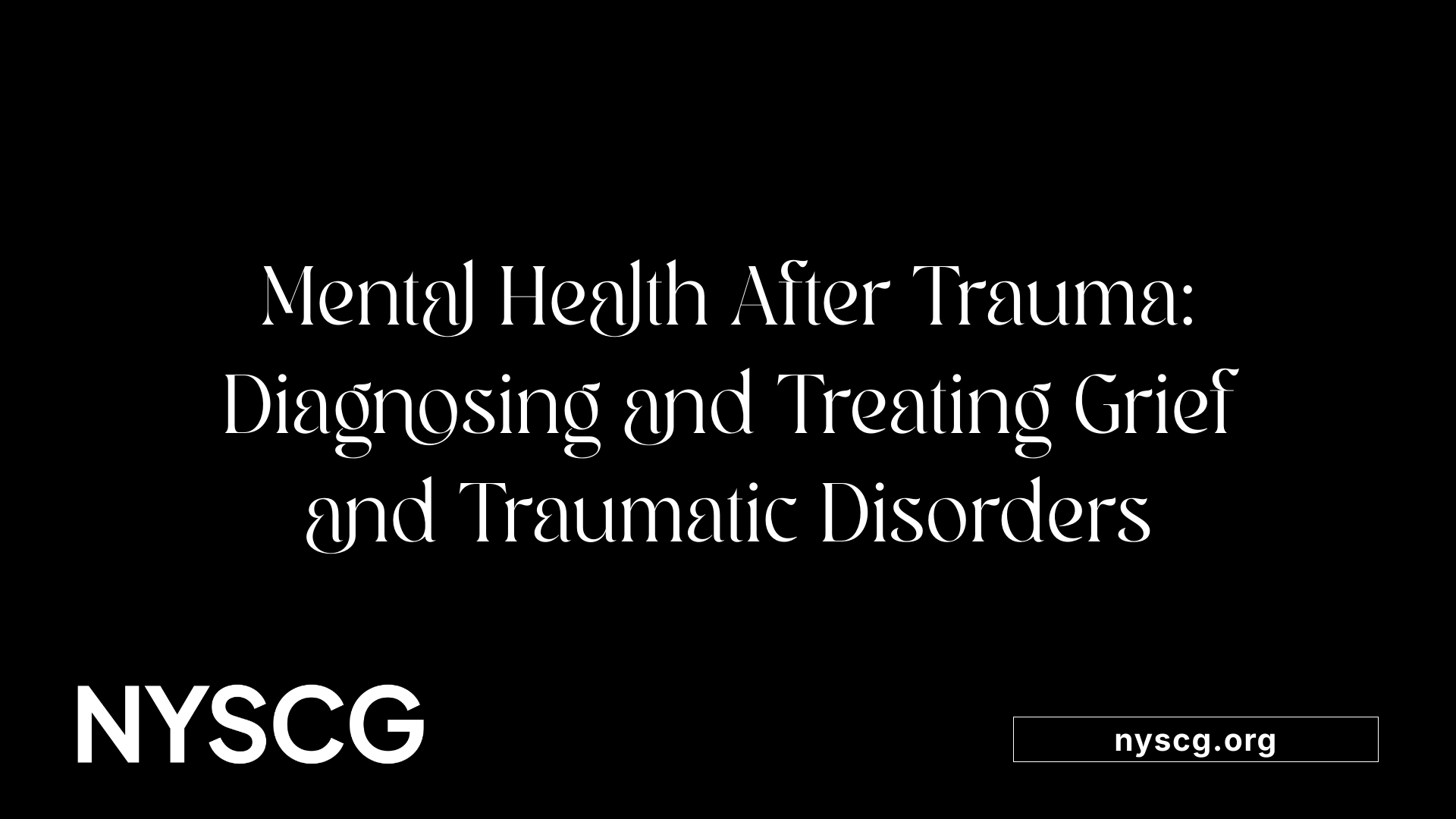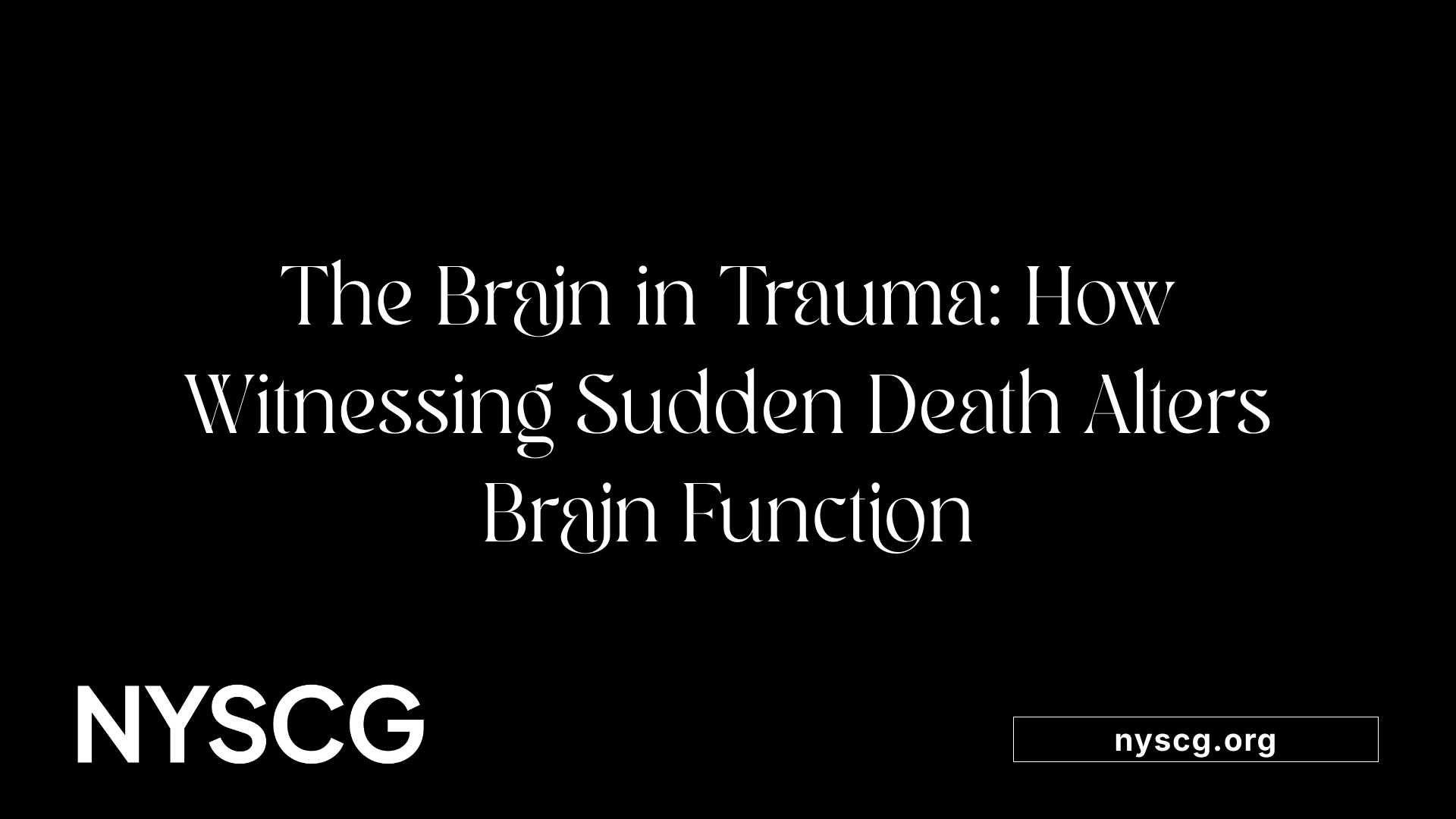Support After Witnessing Sudden Death


Witnessing a sudden or traumatic death can have profound psychological and emotional effects on those directly involved or present at the event. The immediate reactions often include shock and disbelief, while long-term consequences may include complex or prolonged grief, PTSD, and other mental health challenges. This article explores the typical responses to such trauma, how to support affected individuals, effective coping strategies, and available mental health treatments, all aimed at guiding survivors through their journey of recovery.

Experiencing sudden or traumatic death often triggers intense and varied emotional reactions. Survivors frequently feel shock and disbelief, which may include feelings of numbness or living in a dreamlike state. Many report experiencing profound sadness, anger, guilt, fear, and emotional numbness—responses that are natural when faced with unexpected loss.
Alongside these emotions, physical symptoms can manifest. Common physiological responses include sleep disturbances such as insomnia or nightmares, physical pains like headaches or muscle tension, and intrusive memories or flashbacks of the traumatic event. Some individuals might also experience dizziness, fatigue, or a heightened state of arousal or hypervigilance.
Cognitively, survivors often struggle with concentration and decision-making, and may perceive the world as less safe. Distorted perceptions might include feelings of helplessness or believing that future safety is compromised. Social signs can include withdrawing from friends and family, feeling isolated or lonely, and experiencing a sense of detachment.
These responses, though often overwhelming, are typical parts of the grieving process. Recognizing these as normal can help individuals accept their feelings and focus on healing. However, if such reactions persist or intensify over time, professional support might be necessary to prevent the development of prolonged or complicated grief.
Traumatic grief includes intense longing for the deceased, recurring distressing memories, disbelief about the death, and emotional numbness. Individuals might feel a persistent emptiness or bitterness and find it difficult to accept their loss, especially if the death involved violence, accidents, or natural disasters.
Traumatic grief often coexists with conditions like PTSD or depression but remains distinct. It is characterized by its specific focus—preoccupation with the deceased and avoidance of reminders—and its severity and duration. Symptoms such as avoidance of places associated with the loved one, fleeting images, nightmares, and a lack of engagement with life are common.
Unlike typical grief, which tends to gradually lessen over time, traumatic grief may persist or even worsen, leading to challenges in functioning. It may qualify as prolonged or complex grief disorder, especially when symptoms extend beyond six months and significantly impair daily life.
The diagnosis depends on specific criteria involving symptom duration and intensity. Treatments tailored for traumatic grief include therapy methods such as cognitive-behavioral therapy (CBT), Eye Movement Desensitization and Reprocessing (EMDR), and other evidence-based approaches aimed at addressing trauma and grief simultaneously.
Overall, understanding the distinctive features of traumatic grief helps differentiate it from other conditions, emphasizing the importance of targeted interventions to support recovery.

Supporting someone navigating the aftermath of sudden death or witnessing a traumatic event requires compassion, patience, and active listening. Approach them with kindness, offering a non-judgmental space to express feelings and thoughts. Acknowledge the legitimacy of their emotional responses, whether it's shock, anger, guilt, or numbness, and validate their experiences.
Practical support can make a significant difference. You might help with daily chores, such as grocery shopping, cooking, or household tasks, which can feel overwhelming to someone in grief. Creating routines around meals, sleep, and activity can also promote stability.
Encourage open communication, but respect their individual process. It's important to allow them to grieve in their own time without pressure to

Experiencing a traumatic loss, such as sudden or violent death, can significantly impact mental health, leading to conditions like Post-Traumatic Stress Disorder (PTSD), prolonged grief disorder, and depression. These conditions can interfere with daily life, relationships, and overall well-being.
Common Outcomes
Diagnosis involves careful assessment through clinical evaluations and structured questionnaires. Clinicians utilize standardized tools based on criteria from the DSM-5-TR and ICD-11.
Evidence-based therapies are central to effective treatment.
Early intervention and ongoing support are essential. Recognizing maladaptive coping strategies, such as avoidance or self-blame, allows for timely treatment adjustments. As research advances, diagnostic criteria are refined, and interventions become more personalized, ultimately facilitating better outcomes for those navigating the aftermath of traumatic loss.
For more information on diagnosing and treating traumatic grief and PTSD, consult reputable sources using the search query: "Diagnosis and Treatment of Traumatic Grief and PTSD." Organizations such as NICE, DSM-5, and WHO provide detailed guidelines and latest research updates.

Witnessing a traumatic event or sudden death triggers profound changes in brain structure and function, especially in regions associated with fear response, memory, and emotional regulation. These regions include the amygdala, hippocampus, and prefrontal cortex.
The amygdala, which processes fear and threat, tends to become hyperactive after trauma. This heightened activity results in increased feelings of fear, hypervigilance, and emotional instability often seen in post-traumatic stress disorder (PTSD). At the same time, the hippocampus, which helps in forming and retrieving contextual memories, may experience reduced volume or decreased activity. This impairment makes it difficult for individuals to distinguish between past and present threats, leading to intrusive memories, flashbacks, and confusion.
The prefrontal cortex, responsible for rational thinking and impulse control, can become less active or effectively diminished. This reduction hampers the brain’s ability to regulate fear and stress, leaving the individual more vulnerable to emotional overwhelm and avoidance behaviors.
These neurobiological shifts contribute to PTSD symptoms such as re-experiencing traumatic memories, emotional numbness, hyperarousal, and dissociation. The persistent stress response may also cause physical changes in brain circuits, including enlarged amygdala structures and atrophied hippocampal areas.
Interestingly, some of these brain alterations can improve over time with appropriate intervention. Evidence suggests that therapies like cognitive-behavioral therapy (CBT), mindfulness, and meditation can promote neural plasticity, potentially reversing some of the structural and functional changes caused by trauma.
In summary, witnessing a traumatic event or sudden death instigates significant neurobiological impacts—particularly in the amygdala, hippocampus, and prefrontal cortex—that underlie many of the emotional and cognitive symptoms associated with trauma-related disorders. Understanding these changes highlights the importance of timely psychological and neurological intervention to foster recovery and resilience.
Finding closure after an unexpected death is a deeply personal process that involves accepting the reality of the loss and gradually adjusting emotionally. It doesn’t mean that all pain or grief disappears but rather that individuals learn to live with their loss and find a way to integrate it into their lives.
Engaging in activities that promote mourning can be helpful. Sharing fond memories or stories with trusted friends and family can reaffirm connections and facilitate emotional release. Writing farewell letters to the deceased or creating memorials, such as planting a tree or setting up a designated space for remembrance, can also serve as meaningful acts of closure.
Support from mental health professionals, support groups, or spiritual advisors can provide additional guidance, especially if the grief becomes overwhelming or traumatizing. These resources can help process complex feelings like anger, guilt, or helplessness.
Understanding that closure is not a single event but a process that may span months or years is vital. It involves accepting that the pain may lessen over time, but grief may always be a part of one’s life journey. Developing new routines, focusing on personal growth, and allowing oneself to feel and express emotions are essential steps.
Patience and self-compassion are crucial. Recognizing that healing is gradual, and that there is no “right” timetable for coming to terms with loss, enables individuals to be gentle with themselves. Ultimately, creating a sense of peace and purpose after a traumatic or sudden death is an ongoing journey that requires active engagement with one’s feelings and a supportive environment.
Dealing with the aftermath of witnessing a sudden death is complex and uniquely personal. Recognizing that intense feelings, physical reactions, and cognitive challenges are normal parts of the grieving process can empower survivors to seek appropriate support and care. Remember, help is available—from helplines and support groups to professional mental health services—to guide individuals through healing at their own pace. Engaging in self-care, fostering social connections, and understanding the signs of prolonged or traumatic grief can facilitate recovery. Ultimately, patience, compassion, and informed support are key to navigating the path toward acceptance, meaning, and eventual healing after a traumatic loss.
All you need is the will to make the world a better place.
New York State chaplain group inc. is a tax deductible organization with a federal tax Id number 92-383-4921